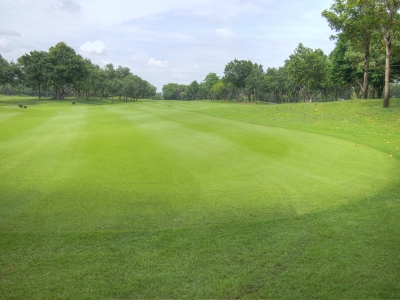EDUCATION OF A GREENSKEEPER
 The following was written by a greenskeeper to his membership at a south Florida golf course, and highlights some of the trials and tribulations of being a superintendent.
The following was written by a greenskeeper to his membership at a south Florida golf course, and highlights some of the trials and tribulations of being a superintendent.
Many of you have seen the hog and armadillo damage while playing the course in recent years. They are here for our prime real estate and to eat food. That food source is grubs. Grubs are not just a meal for wildlife; they are a severe pest to turf grass. The fact grubs live underground indicates they are root feeders. When they feed on roots, they, in fact, take away the life source of the grass to survive. The more they feed on roots, the more visual the thinning of the turf and discoloring. This becomes even more apparent during times of heavy golf play (peak season) and during extreme weather events such as frost.
Living underground makes them hard to identify, but we clearly have known they have been a problem to an extent. Monday, we identified in fact how much of a problem they actually have been. Many areas we tested were 10x’s above thresholds. We have sprayed for grubs on every surface, completing the task of treating 100 acres of turf today. We expect to observe lots of birds and additional damage in areas as the grubs die off.
On a positive note, this pest is a major reason for many areas on the course being thin and weak, specifically in traffic areas and around tees. Thursday, we will start to apply high rates of fertilizer to assist in healing areas. The absence of grubs attacking the roots, along with the fertility application to the course, will aid in recovery and improvements should be observed. The high infestation will delay the effects of recovery, but nevertheless, we should see significant improvements.
I will report on additional discoveries and program implementations in the upcoming weeks. See you on the course.




